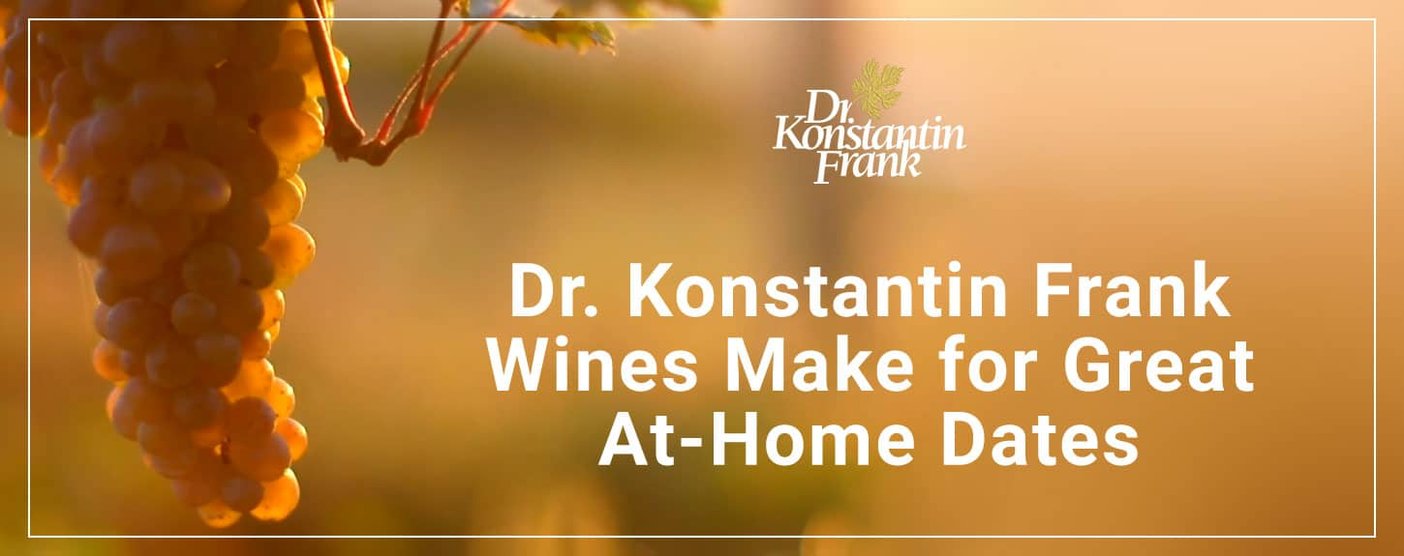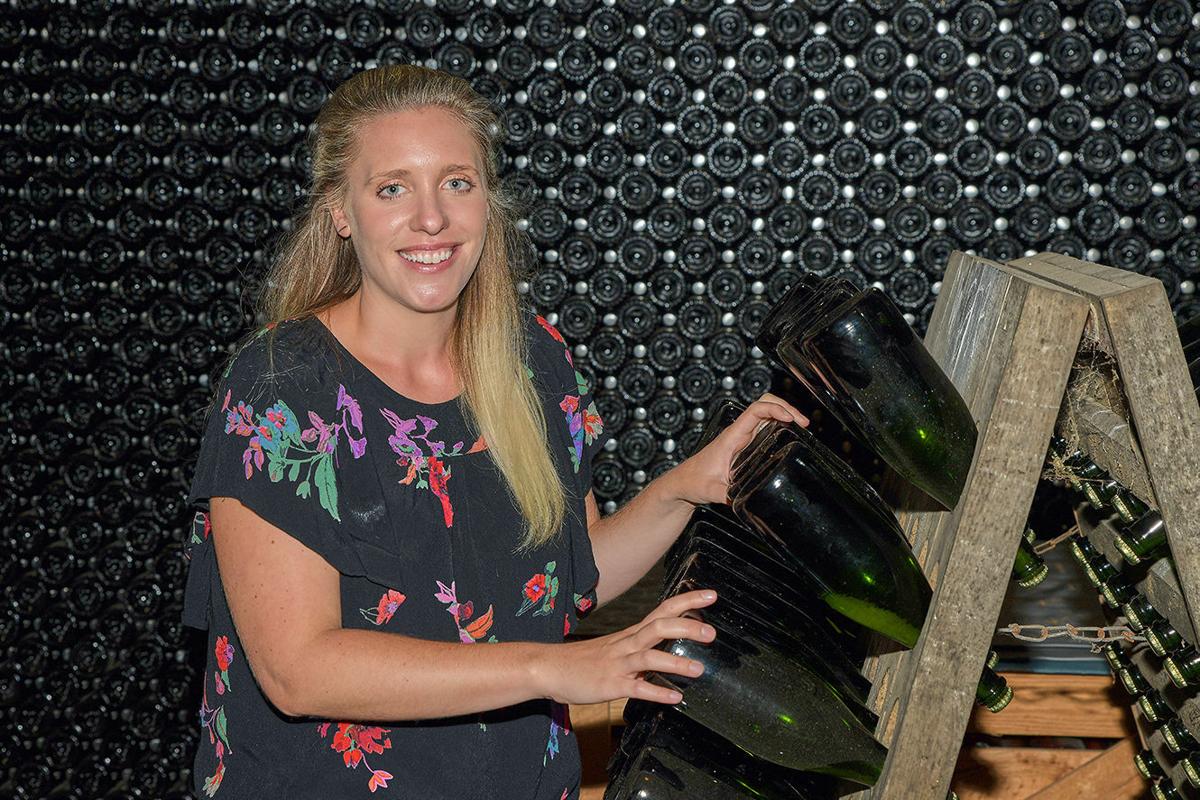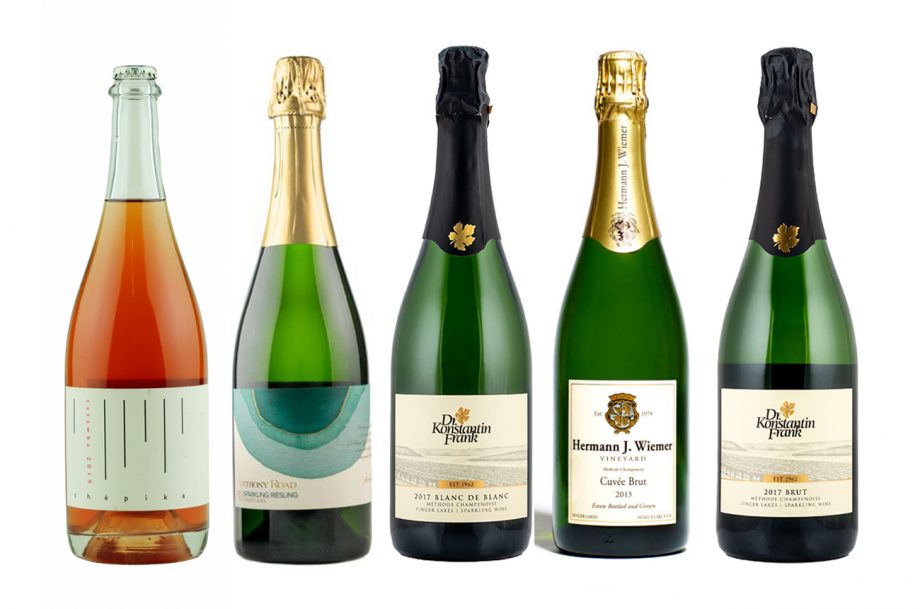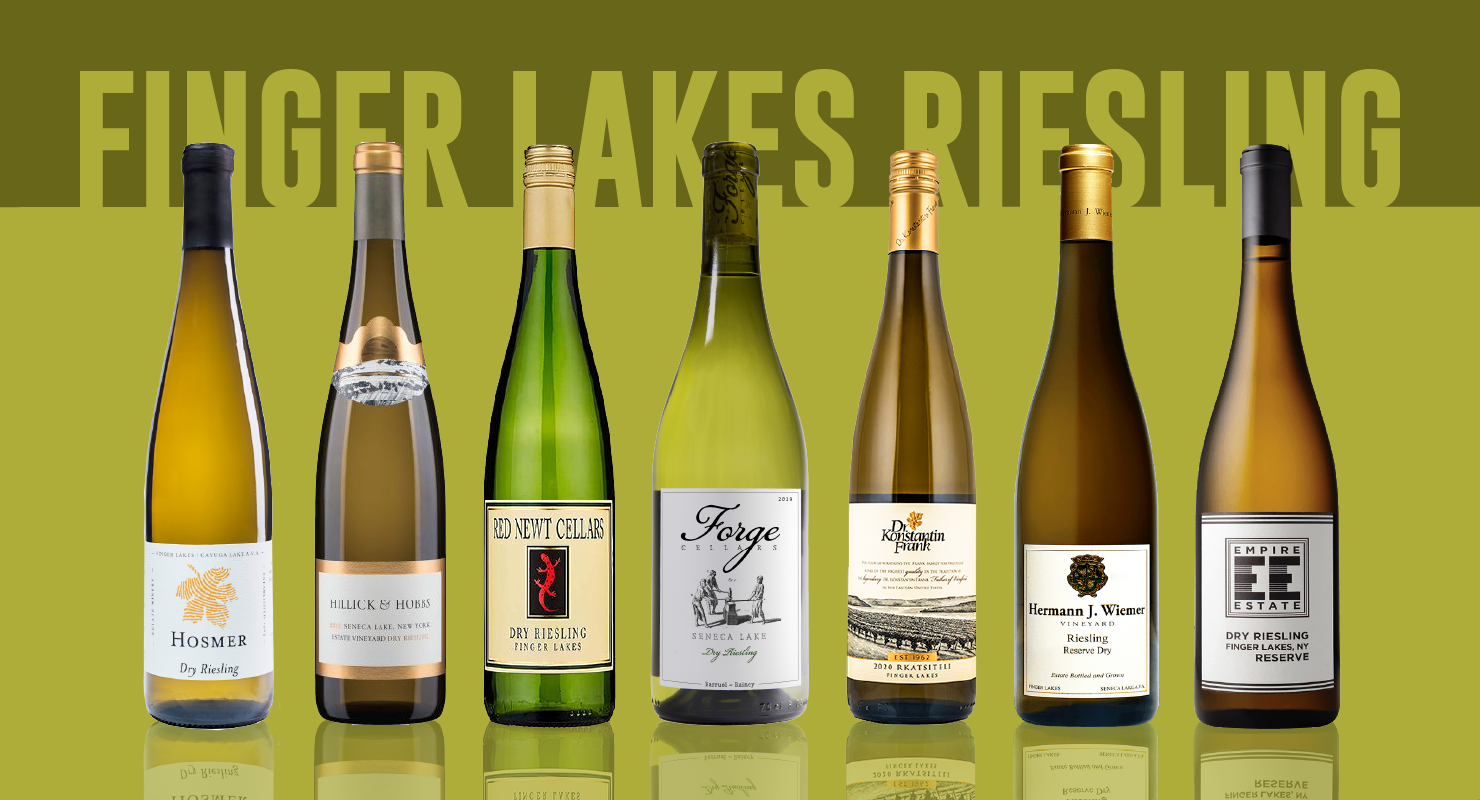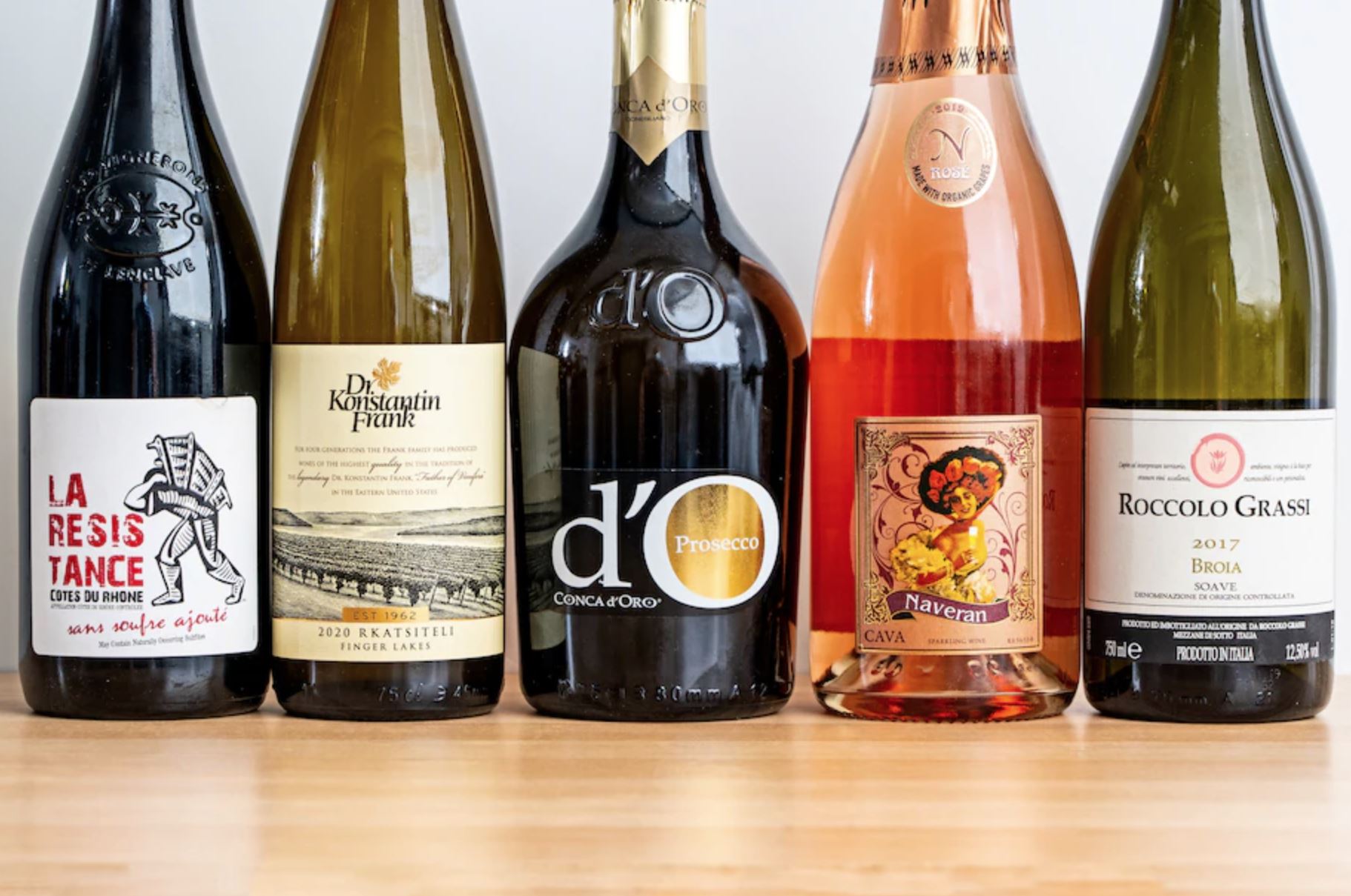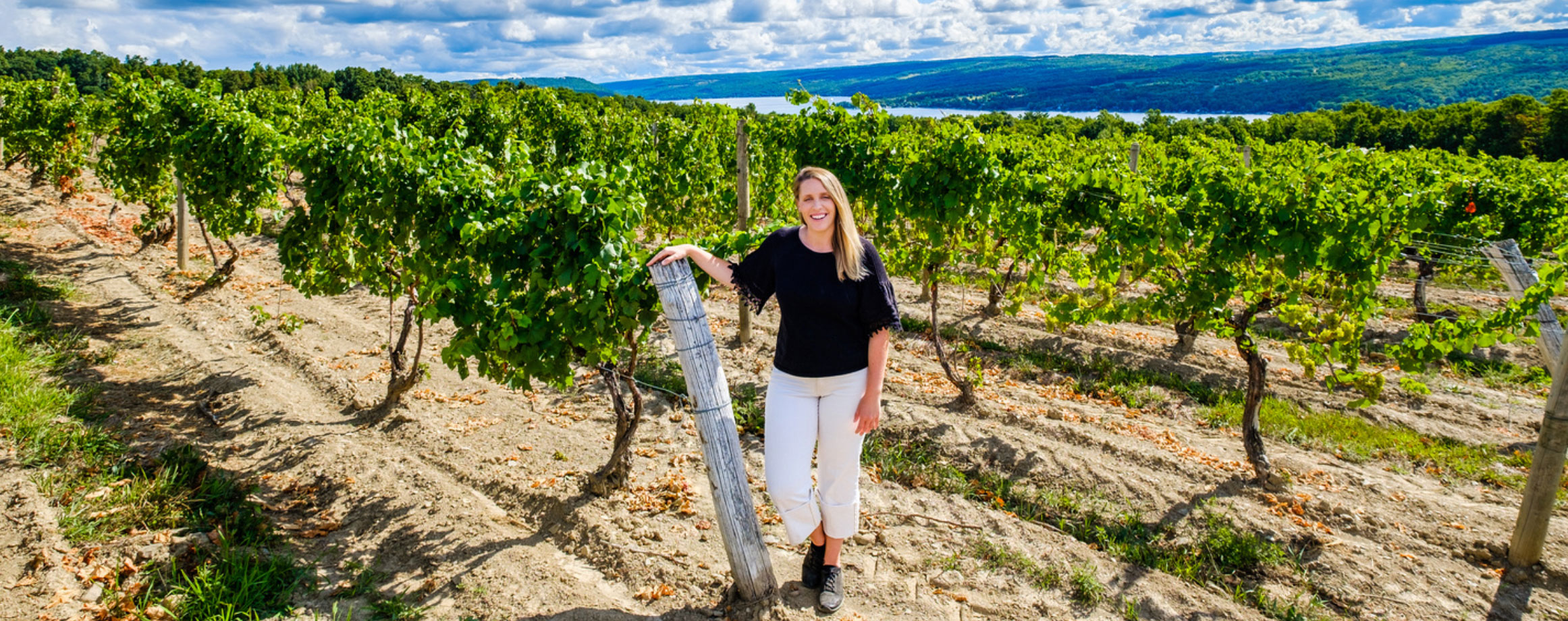The Finger Lakes region in upstate New York might be the last place you think of when you start dreaming about your next getaway, especially during the winter. Somehow, Manhattan became synonymous with New York state and most travelers never bother to look northward. But with its year-round picturesque views, postcard-worthy towns, endless stream of local events and outdoor activities, and innovative eating and drinking establishments for wine enthusiasts and teetotalers alike, the Finger Lakes region is an absolute must for every traveler. Thus, it marks our fifth selection for our series on underrated destinations—It’s Still a Big World.
One of the most interesting parts of the Finger Lakes is its history. Made up of eleven long and skinny lakes, created according to Native American legend because the Great Spirit loved the area so much, he dragged his fingers across the earth and filled the resulting basins with water. Three of these lakes make up the wine region—Keuka, Seneca, and Cayuga. There is a special feeling to these lakes the first time you spot their clear blue water. It comes no doubt, in part, from the incredible story behind the area.
Perseverance is at the heart of the growth of the Finger Lakes region as not just a world-class wine region, but as an exciting travel destination. Wild grapes had long grown in the area when champagne-maker Charles Fournier immigrated to the Finger Lakes in 1934, joined soon after by Ukrainian immigrant and researcher Dr. Konstantin Frank in 1953. The two men, and the many others who came after, saw what the Finger Lakes could become and they worked to harness the region’s unique climate and soil. The winters in the area are long and cold, but the lakes act as giant heaters for the grape vines. The result has been the production of so-called “cool climate” wines from grapes that can withstand the area’s winters—namely, Riesling, Chardonnay, Pinot Noir, and Cabernet Franc.
The Finger Lakes region is quickly becoming a top travel destination, but it has not lost its roots. Grand wineries and tasting rooms now dot the lakes. However, it is the smaller wineries, breweries, distilleries, family run restaurants, and those unexpected finds off the main routes that form the beating heart of the Finger Lakes. Here are my favorite treasures, both on and off the beaten path, that will keep your belly full throughout your trip.
A largely agricultural area, most restaurants and other eateries in the Finger Lakes specialize in American fare using ingredients grown locally. On a back road between Keuka and Seneca Lake, the Spotted Duck Creamery stands amid postcard-worthy farmland. You might spot a horse and buggy along the way used by members of the large Mennonite community in the area and wonder for a second if you have slipped through a time portal. At the Spotted Duck, husband and wife team Daniel and Elizabeth Hoover make frozen custards using local organic ingredients from neighboring farms and their not-at-all-secret ingredient—duck eggs. You can visit their miraculous flock of over 250 ducks while you sample a flight of different custards they rotate with the seasons. One tastes of flavors like Elderberry Port Reserve made from local port wine, and it will be easy to see why this place was voted Best Ice Cream Stand in Upstate NY by the Judges’ Choice last year.
In the town of Naples on the southern tip of Canandaigua Lake, Monica’s Pies is considered a local institution for inventing what has become the local specialty, grape pies made with Concord grapes. While sampling a grape pie is a must, Monica’s Pies makes a host of other sweet and savory pies, and indecision will leave you spending a small fortune just so you can try them all. I did the tough task of doing so for our readers and heartily recommend the pecan, lemon meringue, and apple walnut caramel, in addition to the three cheese and spinach quiche. Finish your tour of small bites in the area by stopping by the Muranda Cheese Company between Seneca and Cayuga lakes for an artisanal cheese tasting you can then wash down with the local wine and beer they have on site.
For larger meals, the Red Dove Tavern in Geneva’s beautiful downtown at the top of Seneca Lake has a delicious, and ever-changing menu based on the local growing season. But you do not have to go into the towns and villages to find a good meal. A few miles outside the one-stop-light town of Dundee by Seneca Lake you can find a large white-washed converted barn with Cape Dutch architectural influence. With a café and bakery, the Tabora Farm and Winery is an excellent stopping place for lunch as you travel between lakes. For firm believers in eating where the locals do, Tabora is at the top of the list. A little closer to Seneca Lake, the FLX Wienery serves elaborate hamburgers, hotdogs, and sausages, as well as creative alcoholic and non-alcoholic milkshakes like Bacon and Brown Sugar or their Nutella Malt.
But food is only a part of the dining scene in the area. With over 200 craft breweries, wineries, and distilleries along the three main lakes alone, it could take you years of weekend drinking to visit them all. It is easy to get distracted by the architecturally impressive larger wineries and tasting rooms, and many of them, like Dr. Konstantin Frank’s Winery, Weis, and Domaine LeSeurre on Keuka Lake are absolutely worth the visit. But some of the best drinking establishments are the smaller ones, the ones in old retrofitted barns or houses. These places often make small batches of their wines or beers, and it may very well be the owner themselves pouring the wine, giving you a more unique tasting experience and the opportunity to learn about their unique processes. They also tend to have more unique events than bigger wineries and breweries, many times partnering up with other small establishments to bring in more customers.
Beerocracy on the Seneca Lake wine trail is one of those special places. I almost missed it as I drove along is search of hidden treasures. It is in an understated house-turned-London-inspired pub. Beerocracy’s owner, Bradley Gillett, is originally from South London and still has his day job for which he works remotely. In 2014, he launched the only dedicated cask ale brewery in New York state. He and his head brewer make 14 beers so far, including a delicious Baker’s Street Best Bitter that is anything but bitter, and a rich Steamship Foreign Extra Stout that tastes of dark chocolate, coffee, and caramel, which Gillett charmingly told me is a “breakfast beer.” Gillett will pour you a half-pint, pint, or a flight and tell you all about his eight-barrel brewing system or the many countries he has lived in around the world before ending up on Seneca Lake.
A little farther down the road on Seneca Lake, Barnstormer Winery produces just 2,500 cases of wine a year, and the only way to get it is from their tasting room in their relaxed restored barn, or their website. They specialize in dry wines, but have some of the best port around.
In a small tasting room open only on weekends or appointment, Bloomer Creek Vineyard on the east side of Seneca Lake still harvests their grapes by hand and do not use herbicides. They harvest at different stages of the growing season and, depending on the kind of season they have had, produce a small batch of Late Harvest Riesling, an earthy wine in which you will swear you can almost taste the last rays of summer sunshine.
Overlooking Keuka Lake, family-run Keuka Spring Vineyard has been racking up New York State awards for its Cabernet Franc, Riesling, and Gewurztraminer. In recent years, the winery has gone from producing small batches to larger, but the vineyard and its tasting room still have a relaxed atmosphere. When it is time to switch to caffeine, sit on the deck of the newly built chalet-style Black Cat Bistro at the top of Keuka Lake for some of the best coffee you will ever taste, personally roasted by the owners themselves onsite.
When you cannot eat or drink another thing, it is not tough to find something to do. Towns and local businesses work together to host events for tourists and locals, like live music and art festivals, throughout the year. Nature enthusiasts will be at home here with outdoor activities like kayaking, hiking the 6.7-mile Keuka Lake Outlet Trail connecting Keuka and Seneca lakes, or ice fishing during the winter. Other businesses have popped up in recent years to help visitors see the region in truly unique ways, such as Finger Lakes Seaplanes, which provides an unbeatable aerial view of the stunning patchwork of farmland, vineyards, and forests.
As for where to stay during your visit, there are the usual small chain hotels and AirBnb rentals, both on and off the lakes, but for a truly unique experience, try one of the local Bed and Breakfasts or glamping. At Plum Point Lodge on the shore of Seneca Lake, you can stay in a newly renovated cottage, or you can go glamping in one of their six yurts. These circular tents come complete with your own private bathroom and a flat screen TV. With a restaurant and bar onsite just steps away from the water, you will not want to leave the property.
After visiting the Finger Lakes, you will come away feeling rested, reinvigorated, inspired, and yes—probably a little hungover, too.
(Author’s Note: Access for people with mobility disabilities can be a challenge at times in the area and not all businesses have made it a priority. However, all of the businesses I included are not only barrier free, but have made a point to be accessible to all customers.)
Cindy Otis is a former CIA officer and is the author of the forthcoming book HOW SPIES SPOT FAKE NEWS. Follow her on Twitter at: @CindyOtis_.
